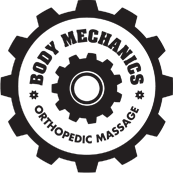Working with Trauma and Abuse
Before we go into what this post is, I want to touch quickly on what this post is NOT.
It is not a substitute for an education course or training in working with victims of abuse/trauma. It is also not a suggestion to go beyond your scope or treat the abuse/trauma through massage therapy. You should follow your local law in reference to reporting abuse as a health care worker as it applies to you, and stay within your scope. I would also like to note that trauma takes many forms, it is not up to us to decide what is traumatic.
What this post is about is providing some useful suggestions to practicing therapists for the physical part of the treatment when the subject comes up with existing patients or someone with a history of abuse/trauma who wants to be part of a massage program. At some point in a career it is likely that either an existing client or a new client will disclose to you during intake that they have been the victim of abuse/trauma. If you are unprepared for how to appropriately handle that disclosure, managing it could be challenging. I suggest you take some time to think about it, but here is what works for me. Keep in mind, I follow generally the Canadian standard of practice and use a full medical consent.
My first steps are to determine in a professional way -is it safe and appropriate to continue. While you do not want to make anyone’s situation worse, it is very important that both parties (patient and therapist) understand their roles to be able to continue. Within the consent process this is usually a pause for me. A time to acknowledge a statement, by saying “I am sorry to hear that. Are you getting help if you need it?”. If the answer is no, I can open a conversation about referral and talk about the role of massage, making sure the patient understands our respective roles and the limits of what I can do for them. If the answer is yes, then we can move forward to discussing why they are here today and stay focused on that. Either way, an open dialogue is the way to go. Keep focused on your role, and be careful not to ask questions that are out of your scope.
You may also be asked some questions about what massage can and cannot do, or about your role. Do not be surprised if, as a lay person, a patient does not necessarily know the boundaries of your treatment and wants something you cannot provide. There are many misunderstandings out there as well as hocus pocus treatments. It is perfectly acceptable to say “I am sorry but that is beyond my training” or “You know, that’s totally out of my wheel house” if you are asked to comment, give advice on, or suggest something you’re not qualified to discuss. I tend to say “I just don’t know enough about that” a lot. Training levels are something easily understood by most people, and while it might be scary to say ‘I do not know’ at first, people readily accept it.
A good consent process is essential in all treatments. I usually expand my consent to include a few extra things for this topic to discuss treatment as a whole, as providing a safe, comfortable, relaxing place that they can control, where all information is private is essential. This is really just a re-wording of my usual consent speech which is that you have the right to stop and modify, and control your treatment. I also expand the consent to have a discussion on triggers. This may not be an issue, but you need to address it before it is. It is important for a patient to know they can stop but what happens then? If for some reason your patient should experience distress in the treatment you should have already asked the appropriate questions about your behavior: Do you A. take your hands off right away? B. Stop moving but stay in place and let the patient try to relax? C.Exit the room so they have privacy? or D. would they prefer that you check in with them without stopping? Everyone will have a different definition of what will make them feel safe so it is important to discuss this before it happens. If everyone is on board and you have had a frank discussion about how you’re going to proceed with the treatment and what the goals are, you can continue.
Many of the hands-on components that I will use will be the same ones I use every day, just packaged a little differently.
So here are my suggestions, some of them are obvious, and some might not be so obvious, but all of them I have used more than once for one reason or another in this scenario.
– prepared to work clothed
-Be prepared to work through sheets
-Be prepared with a heavy blanket or extra blankets; being covered by weight can feel comforting.
-Some people love heat. Be prepared to work hot if that works for them.
-Perfect your draping to an art form of tight origami
-Think about sleep shapes rather than how someone normally lies on the table- aka let them hold something if they feel like it or lay side-lying.
-Be prepared to try outside-of-the-box activities to give the patient control:
1.Use body weight rather than press down onto the person- if you know some positional release techniques they may be appropriate. I find this particularly useful in the cervical region.
2.Let them move under you rather than you move over them
3.Consider rhythmic activities.
4.Demonstrate the technique first, let the person try it on themselves and then you perform it with them- The verbiage on this would be “So I am going to show you a technique, then I am going to let you try it, then we are going to do it together.”
-Let the person choose their own music/sound environment
-Work in non-traditional time lengths if necessary.
-Create patterns within the treatment: creating a pattern creates predictability. If someone is nervous this can go a long way to soothing them. Examples would be:
1. Always anchoring the drape of the fabric in the same way before you move it to signal change.
2. Opening and closing all sections of the body in the same way.
3. Before moving a body part, giving a gentle squeeze (explain it of course by saying , ‘Just before I stretch you I will always let you know we are going to move by….”Creating a system of patterns can be helpful in creating a predictable environment.
-If home care is in your scope, working backwards from a home care first perspective might be helpful too. In this scenario, we would do home care together, and you would facilitate the process in office. As trust and comfort is gained you would add in more participation and possibly hands on. I use balls and body weight and do the exercises with them at first, then expand by adding hands on adjustments and then finally more hands on work.
These are just a few of the things that have worked for me in the past. It is important to remember that there is no one single way to treat and that clear communication is essential. I also want to take a moment as some of you might be asking ‘why would someone who has difficulty being touched seek out massage as a treatment and how did it get to this point?’. This is a little like asking ‘why did the chicken cross the road’. What it comes down to, is it does not matter how they got there, but it is your job to get them across the road safely.

